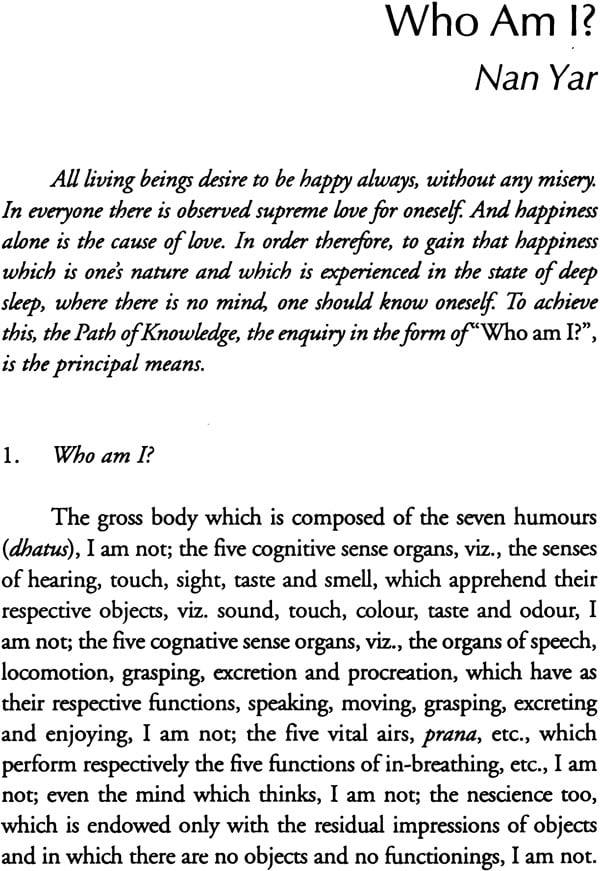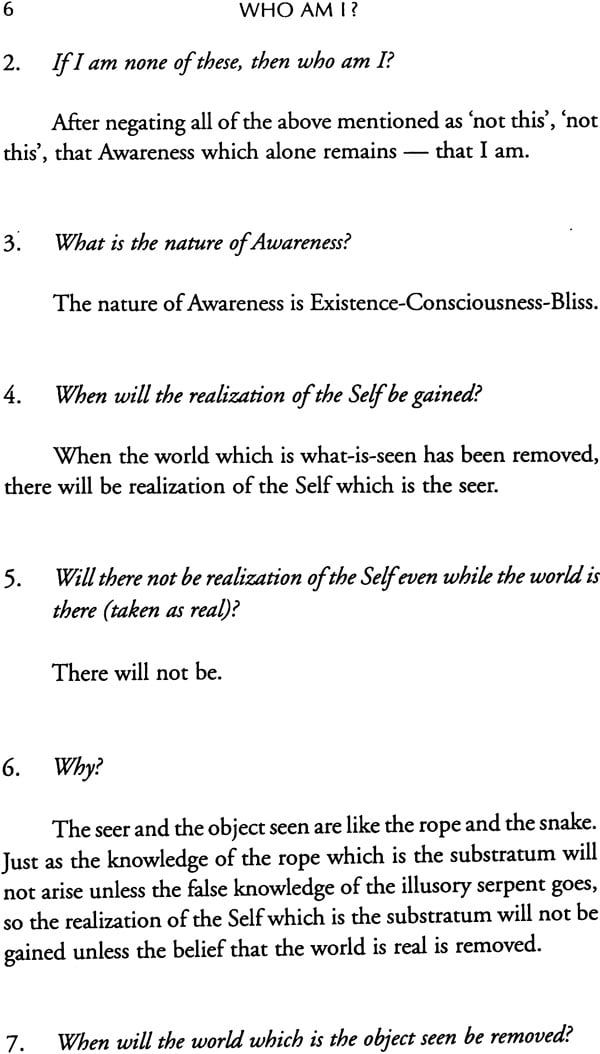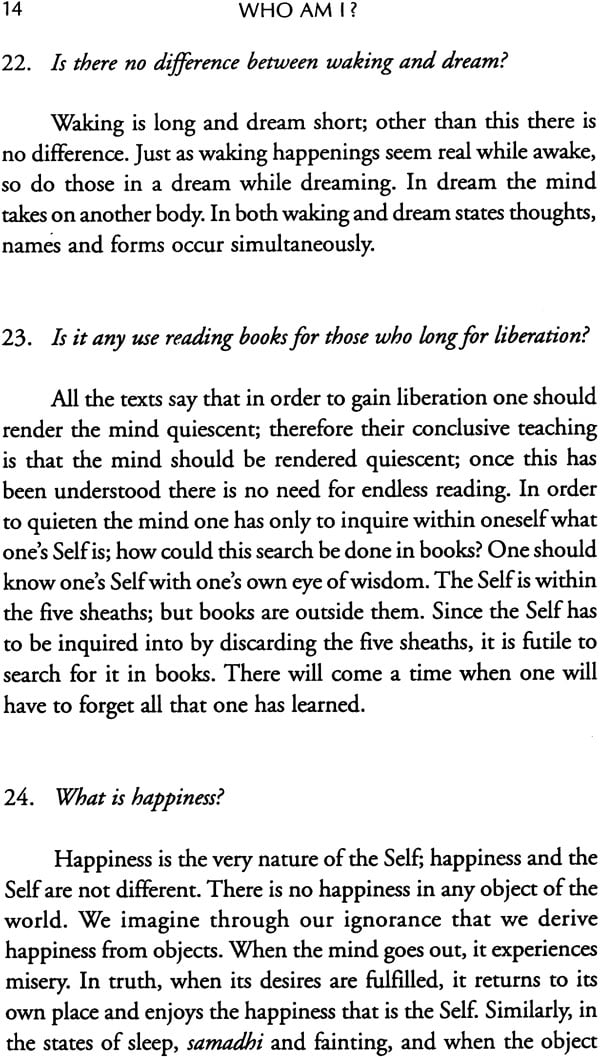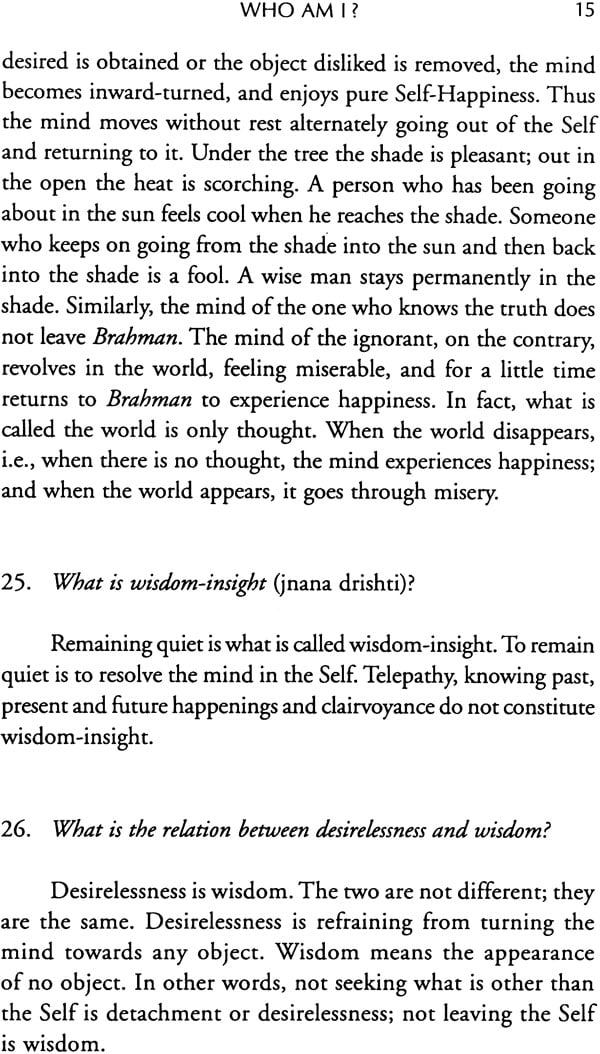
Who Am I? (The Teachings of Bhagavan Sri Raman Maharashi)
Book Specification
| Item Code: | NAD352 |
| Author: | Bhagavan Sri Raman Maharashi |
| Publisher: | Sri Ramanasramam, Tamil Nadu |
| Language: | English |
| Edition: | 2021 |
| ISBN: | 9788182881136 |
| Pages: | 40 |
| Cover: | Paperback |
| Other Details | 8.5 inch x 5.5 inch |
| Weight | 20 gm |
Book Description
Who am I? Is the title given to a set of questions and answers bearing on Selfenquiry? The questions were put to Bhagavan Sri Ramana Maharshi by Sri M. Sivaprakasam Pillai, about the year 1902. Sri Pillai, a graduate in philosophy, was at the time employed in the Revenue Department of the South Arcot Collectorate. During his visit to Tiruvannamalai in 1902 on official work, he went to Virupaksha Cave on Arunachala Hill and met the Maharshi there .He sought from him spiritual guidance and solicited answers to questions relating to Selfenquiry. As Bhagavan was not talking then, not because of any vow he had taken but because he did not have the inclination to talk, he answered questions put to him by writing. As recollected and recorded by Sri Sivaprakasam Pillai, there were thirteen questions and answers to them given by Bhagavan. This record was first published by Sri Pillai in 1923 (in the original Tamil), along with a couple of poems composed by himself relating how Bhagavan’s grace operated in his case by dispelling his doubts and by saving him from a crisis in life.
Who am I? Has been published several times subsequently. We find thirteen questions and answers in some editions and twentyeight in others. There is also another published version in which the questions are not given, and the teachings are rearranged in the form of an essay. The extant English translation is of this essay. The present rendering is of the text in the form of twentyeight questions and answers.
Along with Vicharasangraham (SelfEnquiry), Nan Yar (Who am I?) constitutes the first set of instructions in the Master’s own words. These two are the only prose pieces among Bhagavan’s works. They clearly set forth the central teaching that the direct path to liberation is Selfenquiry. The particular mode in which the enquiry is to be made is lucidly set forth in Nan Yar. The mind consists of thoughts. The “I”thought is the first to arise in the mind. When the enquiry “Who am I?” is persistently pursued, all other thoughts get destroyed, and finally the “I”thought itself vanishes leaving the supreme nondual Self alone. The false identification of the Self with the phenomena of nonself such as the body and mind, thus ends, and there is illumination, sakshatkara. The process of enquiry, of course, is not an easy one. As one enquires “Who am I?” other thoughts will arise; but as these arise, one should not yield to them by following them; on the contrary, one should ask, “To whom do they arise?” In order to do this, one has to be extremely vigilant. Through constant enquiry one should make the mind stay in its source, without allowing it to wander away and get lost in the mazes of thought created by itself. All other disciplines such as breathcontrol and meditation on the forms of God should be regarded as auxiliary practices. They are usefui so far as they help the mind to become quiescent and onepointed. For the mind that has gained skill in concentration Selfenquiry becomes comparatively easy. It is by ceaseless enquiry that the thoughts are destroyed and the Self realized — the plenary Reality in which there is not even the “I”thought, the experience which is referred to as “Silence”.
This, in substance, is Bhagavan Sri Ramana Maharshi’s teachings in Nan Yar (Who am I?).









